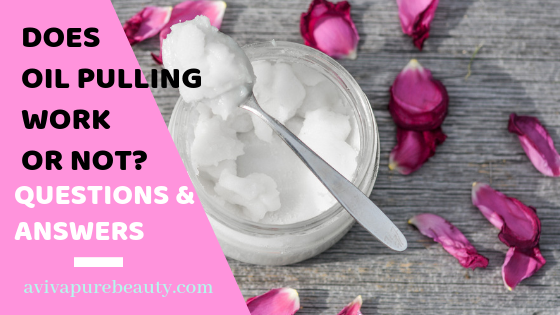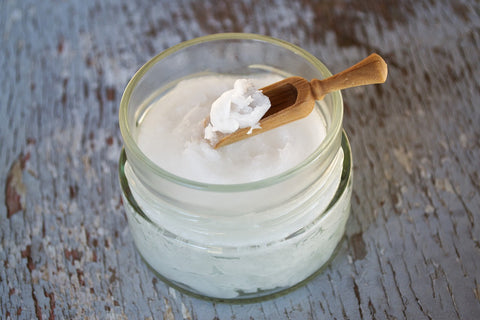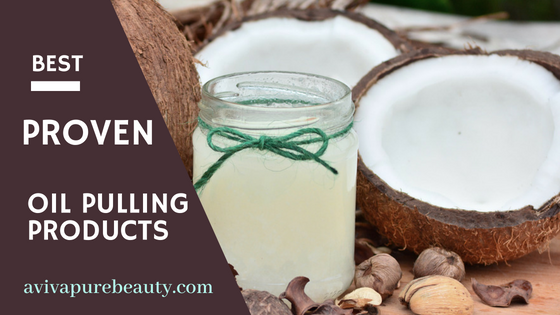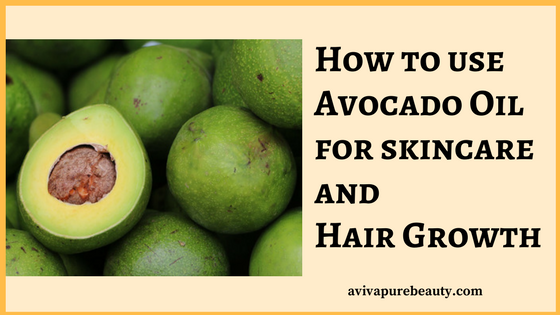
You may have heard about oil pulling but you are not sure how it can work for you. Does oil pulling work or not - that is the question indeed.
In this article we put together the most important information about oil pulling. Let's start with the history...
Where has Oil Pulling Originated? The History in Short
Oil Pulling is a method that had been originated in Asia, precisely in India as part of the Ayurvedic medicine.
An Ancient Ayurveda Treatment
In Sanskrit the word for dental health ‘dantaswasthya’ and following Ayurveda, the main point is that the nature of a cure depends upon the constitution of the person and the climatic changes.
The ayurvedic treatments where very personal ones and everyone was striving to treat imbalances of the "doshas" - the three elements that come together to create a person's over-all health.
The Oil pulling method as an Ayurvedic practice known as "Kavala or Gandusha" provides a cure for not only oral health issues but also for diseases such as , asthma, hormonal imbalances, headache, diabetes, and congestion.
Oil Pulling used as the traditional folk treatment in India is believed to prevent oral malodor, cracked lips, decay, dry throat, weakening gums and jaw, and tooth decay.
Different oils can be used per the ayurvedic method: sunflower, coconut, or sesame oil.
Some treatments like the "kavala graha and gandusha" contain gargling with sesame oil or sunflower oil. Prescribed by Ayurvedic practitioners it would be help with mouth inflammation, dryness or any other oral ailment.
The Modern Way of Oil Pulling
The oil pulling method of today started in the 90s by Mr. Tummala Kotesware Rao of Bangalore, India. He discovered oil pulling after reading an Ukrainian academic paper which claimed that shamans through Siberia had used oil pulling for more than 100 years.
It was also in the late 90s when the Western wellness trend began. People were searching more and more for alternative methods to keep the body healthy. While sesame oil was widely used for oil pulling hence the connection to Ayurveda, a new miracle oil made its way into the West: Coconut Oil.
The cold-pressed, unrefined and unprocessed coconut oil came to light and became the most sought after and effective oil for the oil pulling method.

Is Oil Pulling Dangerous?
Now that we know where it has originated should we actually ask this question? The fact alone, that a method had been used throughout centuries by Millions of people, should be the answer.But we live in a time where the word danger is used very lightly. And sometimes it seems that there are dangers everywhere. It is not true.
Let's call it a myth that such a simple and healthy method like oil pulling is being called dangerous. Let's assume that maybe it has been found that it can be harmful to pregnant mothers or to people who suffer from difficult to treat diseases such as Alzheimers.
The only reason that it could be harmful is, when anyone would ingest or swallow the toxins pulled from the gums.
Therefor it is very important that you never swallow the oil. Spit out the oil into the trash after having it swished in your mouth for a while.
Can Oil Pulling Reverse Tooth Decay?
If tooth decay had been diagnosed by the dentist, unfortunately oil pulling cannot reverse the damaged teeth.
The good news it that oil pulling is preventing tooth decay because it is reducing the amount of harmful bacteria that are causing the teeth to decay.
How can Coconut Oil Kill Harmful Mouth Bacteria?
In a study 30 different fatty acids had been tested for their ability to attack harmful bacteria. They had been compared and the result was astonishing:
Coconut oil with the fatty acid named lauric acid was the winner - Lauric acid combats harmful bacteria.
When you swish coconut oil in the mouth lauric acid attacks the harmful bacteria that can cause bad breath, tooth decay and gum disease.
Especially the bacteria names Streptococcus mutans which is amajor cause of tooth decay.
How do you Do Oil Pulling the Right Way?
Oil pulling is the method of swishing oil in your mouth for 5 to 20 minutes. You can begin with 5 minutes (or less) and increase gradually to 10 and 15 minutes.Basically oil pulling is like using oil as a mouthwash.
Here are the steps:
- If the coconut oil should be firm which can be during the winter months (it gets firm below 76 degrees F) place bottle or packet in a glass with hot water or if you use packets, hold it for some minutes in your warm hands.
- Pour a tablespoon of coconut oil in your mouth or use 1 single packet.
- Swish the oil in your mouth for 5 -15/20 minutes, pushing and pulling it between teeth.
- Spit out the oil into the trash (don't use the toilet or the sink as it can clog the pipes).
- Brush your teeth as regular.
It's best to do oil pulling as part of your morning or evening routine. But you can do this at any time during the day.
If you are from England: Buy Cocopull on Amazon UK
Brushing the Teeth before or after Oil Pulling?
There is no need to brush the teeth before using the oil pulling method. But if you do oil pulling after you had a meal, we recommend to brush the teeth.
In general the oil pulling practice will remove food and bacteria from the mouth. If you do oil pulling the first thing in the morning you would not brush your teeth first.
The good thing is: There's no right or wrong way to do oil pulling. You find your own way and rhythm.











